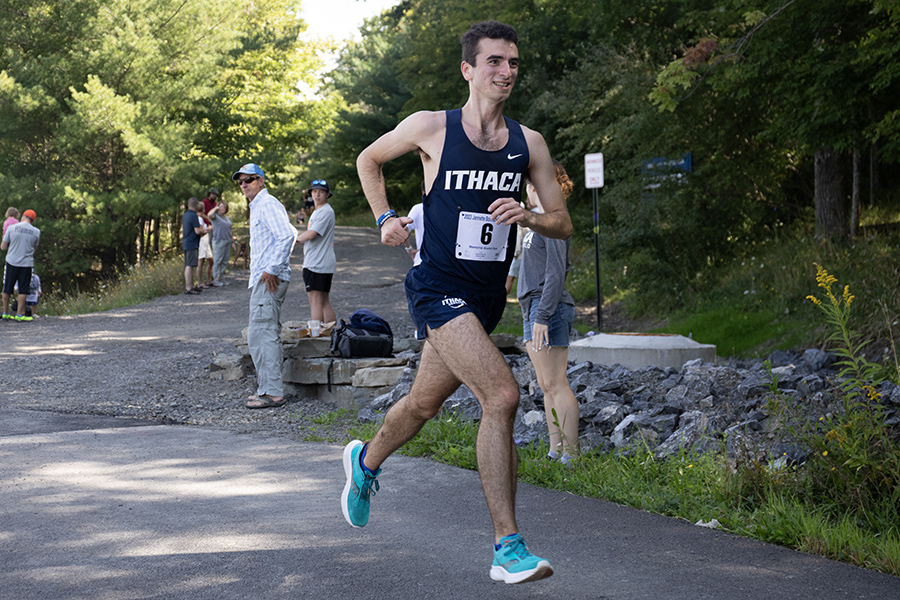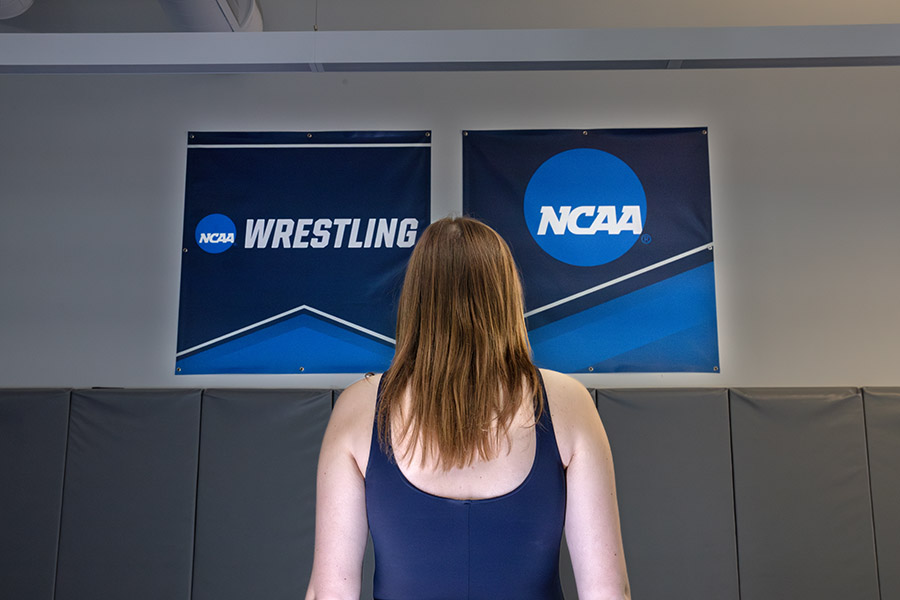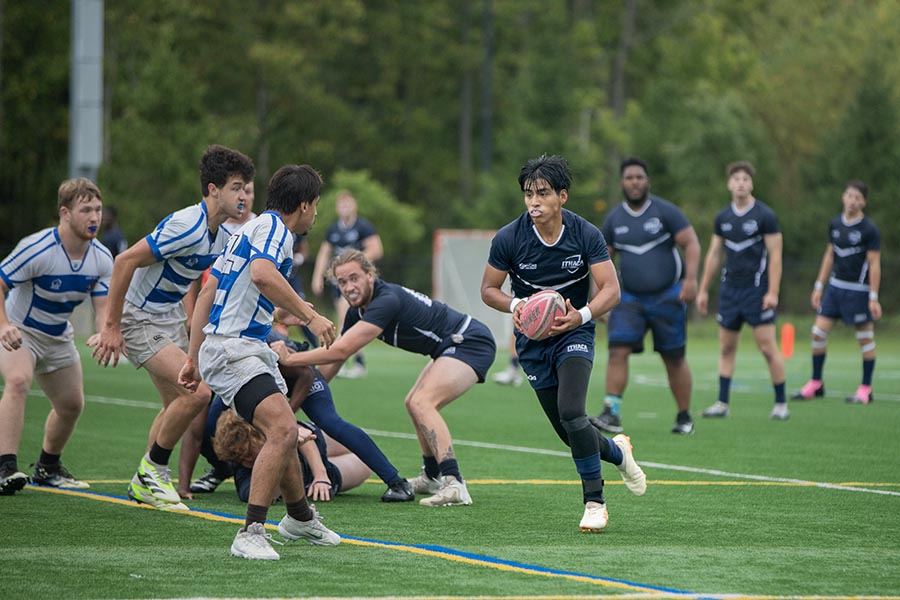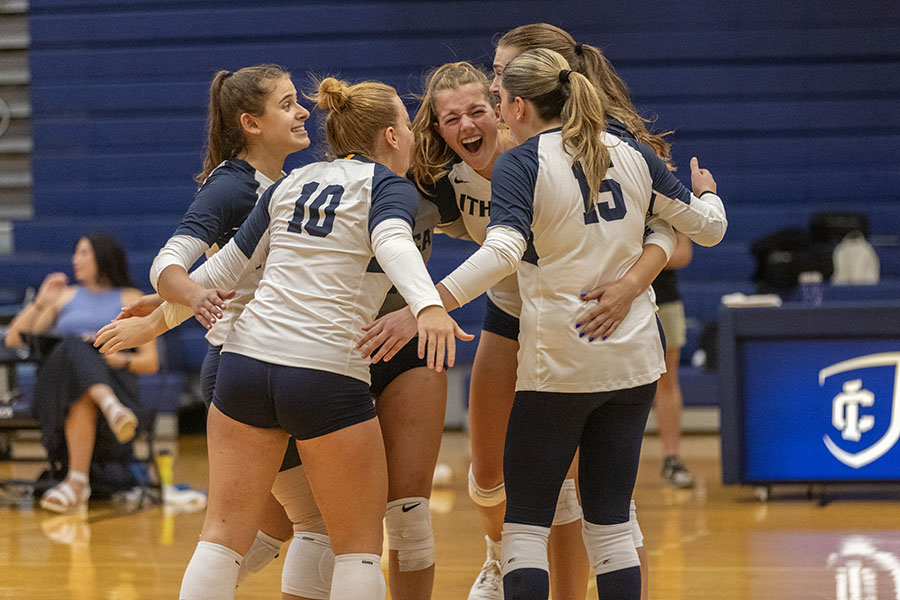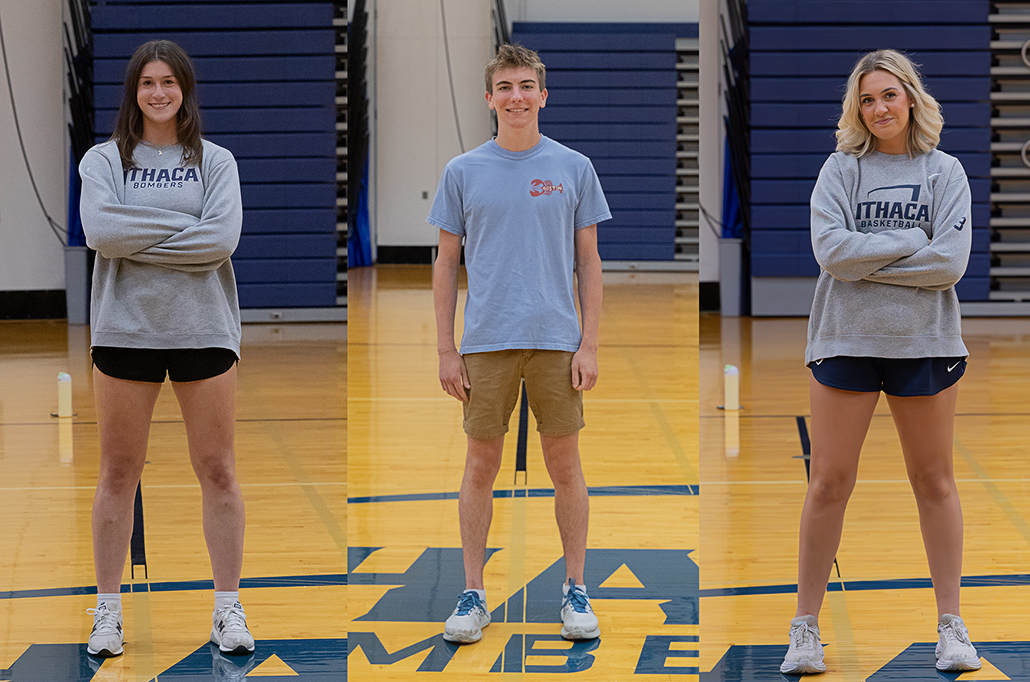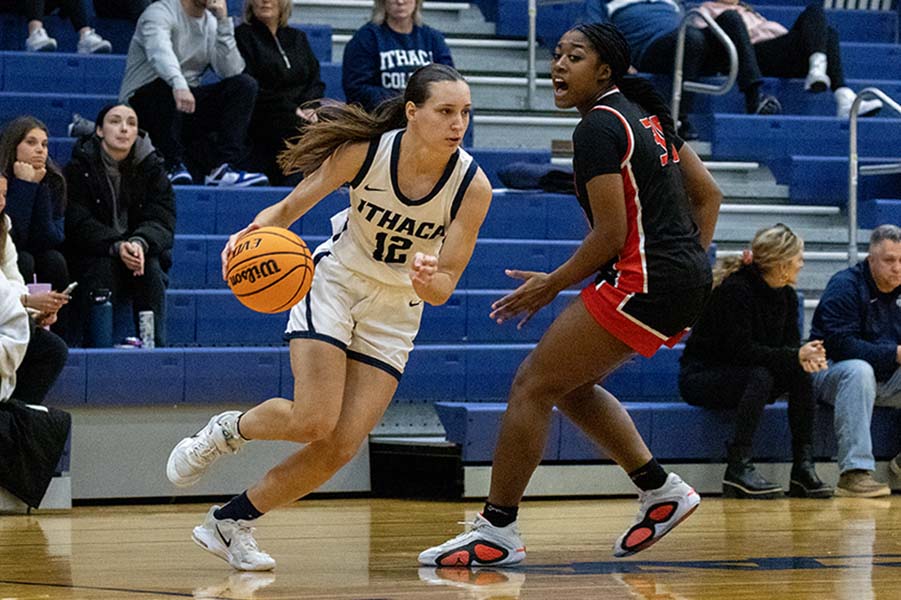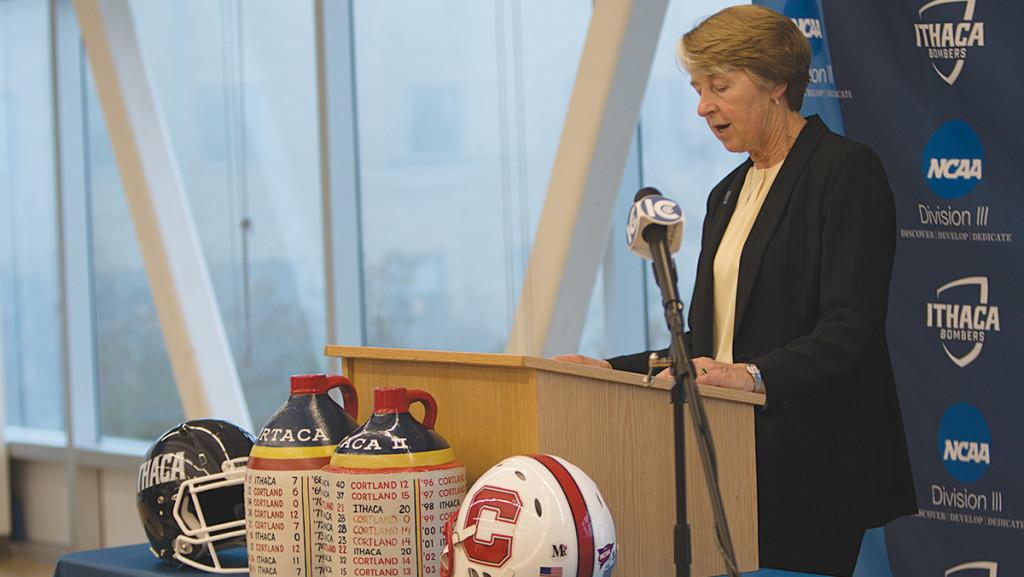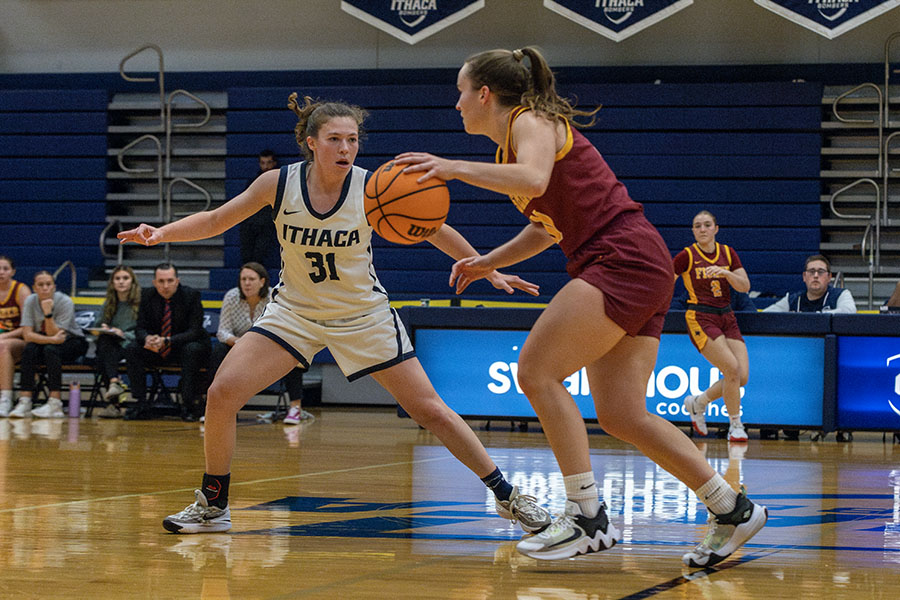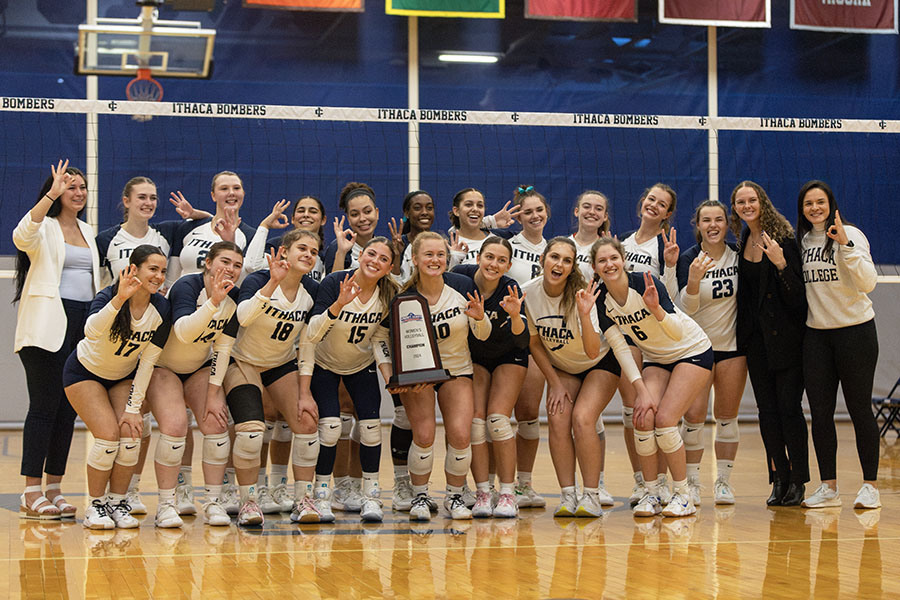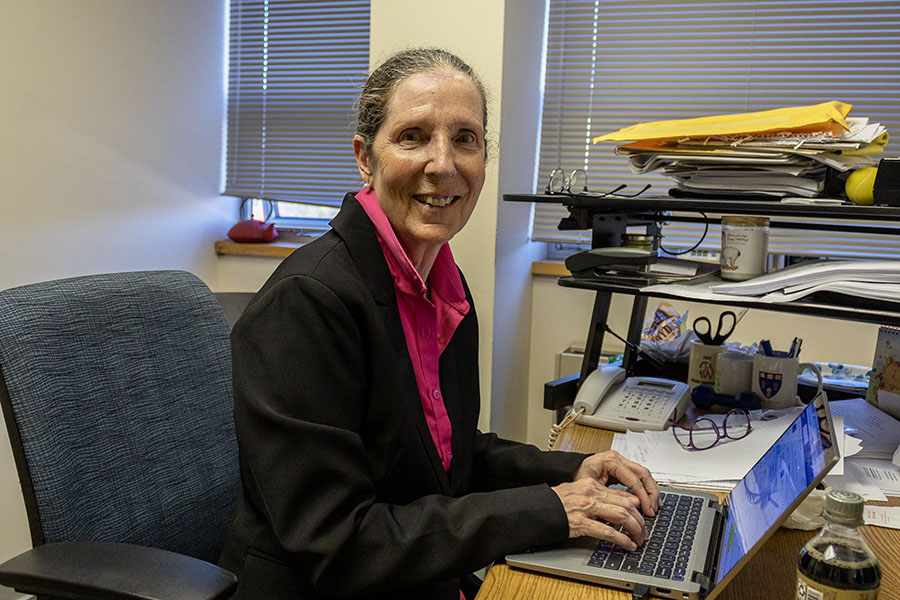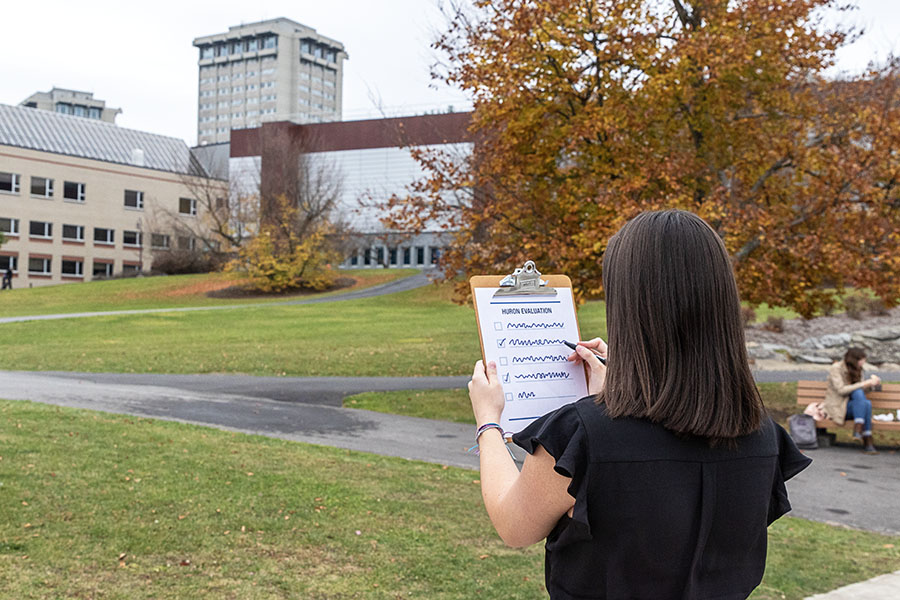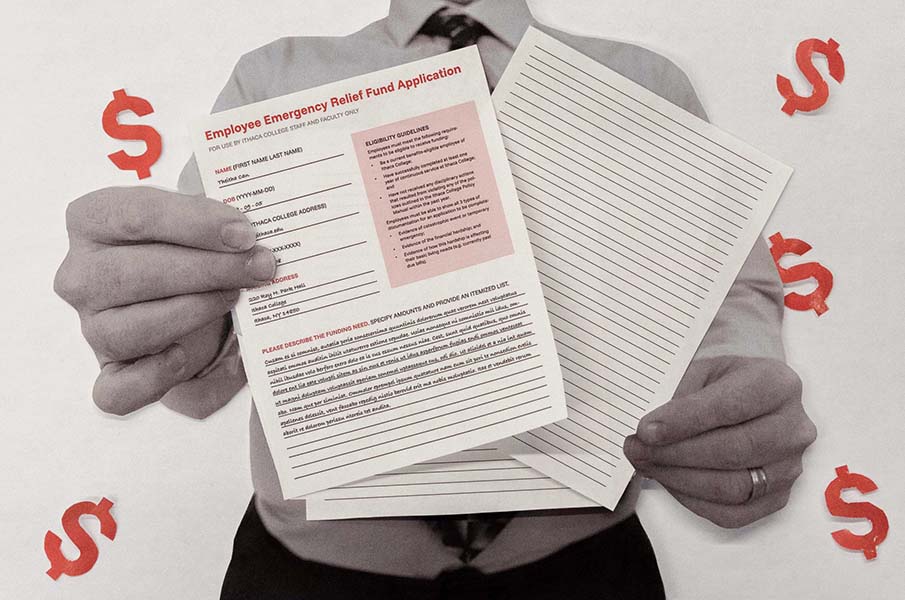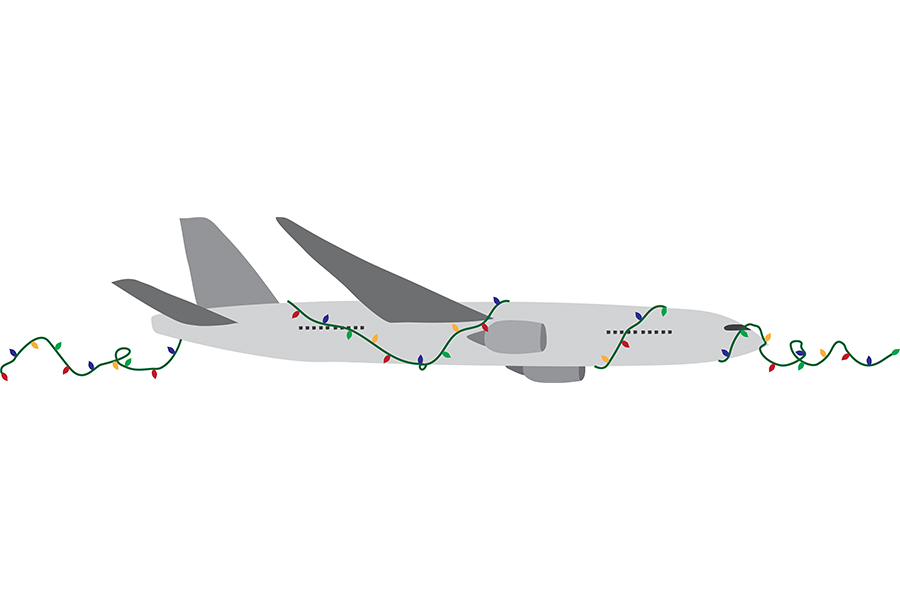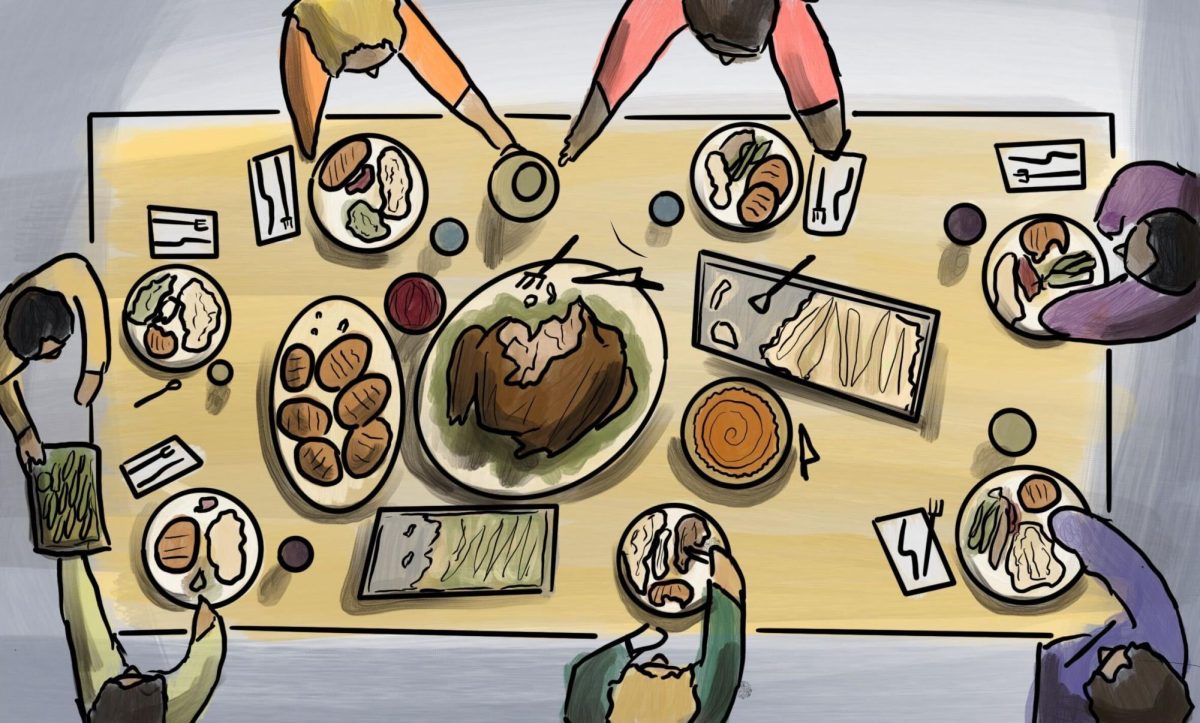Unlike most athletes, long-distance runners often participate in three separate competition seasons throughout the academic year: cross country in the fall, indoor track in the winter and outdoor track in the spring. This rigorous schedule — usually with no more than a week off between racing periods — comes with a great responsibility to manage not only time and academics, but also stress and injury prevention.
Ithaca College Cross Country currently rosters 25 athletes across both women’s and men’s teams. Of those 25 athletes, 19 run all three seasons.
With constant running throughout the year, physical strains including joint stress and muscle fatigue are common in long-distance runners. Reflecting on these challenges, sophomore distance runner Jessica Goode — who competes in all three seasons — talked about the importance of rest and switching up her training activities so she is not only running all the time.
“The biggest physical strain, I think, is lack of rest,” Goode said. “A way that someone can prepare for it is to prioritize rest, but also cross train such as biking, swimming and not just running all the time. And taking your hard days hard and your easy days easy.”
Senior distance runner Patrick Bierach said that for distance runners, the workload tends to be similar in all three seasons and the team will have specific days dedicated to workouts and other days dedicated to recovery.
“We will typically have two workouts and two lift sessions per week,” Bierach said. “[In a workout], you’re basically running faster for a shorter amount of time. The rest of the week will be easy runs or recovery runs. We can’t go hard every single day. That’s just not the way it works, you’ll break down. Saturday is either a competition, or you just run on your own. And then Sunday is a long run.”
Bierach emphasized the importance of keeping a long-term perspective, considering the brief and short intervals in between seasons. With the short amount of time to rest the athletes get, he said it is beneficial to not push too hard.
“You kind of have to think long term,” Bierach said. “Once one season ends, you kind of go right into the next one. … You might get a week break in between cross country to indoor track, so from fall to winter. Sometimes you don’t get a week break going from indoor to outdoor. So, it’s all about basically just making sure you don’t stress yourself out too much and get into a hole that you can’t get out of.”
Many runners have been competing in a similar schedule since high school, making them particularly susceptible to burnout — a phenomenon seen when an athlete feels extreme fatigue and as a result, has declined performance.
Graduate student Julia Tomanovich has made a switch from a three-season athlete to now an assistant coach for the college’s women’s cross country team, despite having an additional year of eligibility. Tomanovich said burnout is a complex concept, but many cross country and track and field athletes face it because of the extensive seasons.
“Burnout is tricky, especially the way our season goes,” Tomanovich said. “Our season is really June to November, which is kind of the longest season ever, but we really don’t start competing until September. … It’s a little bit inevitable for our sport, especially since we also roll from cross country into track. But, I think being smart about your training and listening to your body and if it feels like it’s tanking and you need some time off, [head coach] Erin [Dinan] is extremely flexible and wants to tailor everyone’s training to what people need.”
Moreover, Tomanovich discussed her extensive commitment to varsity three-season running, a journey that started in eighth grade. She said the relentless schedule eventually took its toll.
“My college career was kind of the tail end of my running experience,” Tomanovich said. “I had been running on a varsity team since eighth grade, also three seasons. Typically how that works is between every season, I’d take a max of a week and a half off. … With collegiate running, I feel it’s a little more intense and you’re balancing it with a lot more school and stuff. All of that kind of compounded together. I think it went well and I’m happy with the time I had, but I didn’t need to do that again.”
Goode discussed her journey with burnout that she faced toward the end of her spring season last year. She said there was not much she was able to do to prevent the burnout outside of taking care of her body to the best of her ability.
“I have faced burnout towards the end of my track season last year,” Goode said. “I saw that my times were going backwards — once it’s happening, it’s happening. You try everything you can: rest, eating properly and just cross training, but sometimes you just can’t bounce back from that fatigue. … Right now to combat that future fatigue, I am really prioritizing rest, and I will cross train at the end of my season. … Getting in nutrients and rest is the golden idea.”
To deal with the physical strains, Ithaca College has installed many supportive practices into its athletic training department to help athletes get what they need. The campus’s three athletic training clinics — located in the Athletics and Events Center, the Hill Center and the Ceracche Center — each have support items to help athletes, such as cold and warm tubs to prevent muscle soreness and stiffness and NormaTec boots to improve blood circulation and promote healing.
Assistant athletic trainer Natalie Sharpe works directly with the track and field programs during the winter and spring seasons, and said that being proactive with the athletes she treats is especially important as they enter their seasons.
“In August, I reached out to some of my track athletes, who I knew were going to have shin pain, foot pain, and I was like, ‘Alright, you should start getting into the clinic soon,’” Sharpe said. “Even though they aren’t in season yet or they have that little bit of a break, they should continue with their rehab and their treatment to be at their best when that season starts again.”
Despite her own proactivity, Sharpe said it is important that athletes also advocate for themselves and take initiative in their maintenance and recovery.
“It’s a lot of their responsibility to make sure that they’re getting into the clinic as well,” Sharpe said. “If they’re not competing, they’re not happy. So, they’re going to be coming into the clinic to make sure that they’re getting treatment. A lot of it’s just about load management and how much you should be doing and the coaches are very good about planning their workout weeks.”
Bierach said procrastination is not an option for athletes when schedules and motivation can be unpredictable.
“Being a student athlete in general, you’re just kind of always busy,” Bierach said. “You just kind of have to stay on top of things. Procrastination just kind of can’t happen. ‘I might have the energy today, but will I have the energy tomorrow?’ I think the biggest thing is just time management.”
Based on her experience running competitively, Tomanovich said that if she had a word of advice to offer current three-season runners and those thinking of pursuing it in the future, it would be to stay in the game mentally while taking care of their bodies physically.
“Utilize your resources,” Tomanovich said. “Each team has its own designated sports psychologist, which was a big thing that I struggled with. Running is such a mental game, that is you can do what you can to help yourself out on that front. It’s super helpful. … I think what I wish I did better was just appreciate the time I had while doing it. … Time really flies, and kind of realizing that we’re here and also competing at a [Division III] level to be competitive but to also have fun. The fun part is what makes it worth it.”


